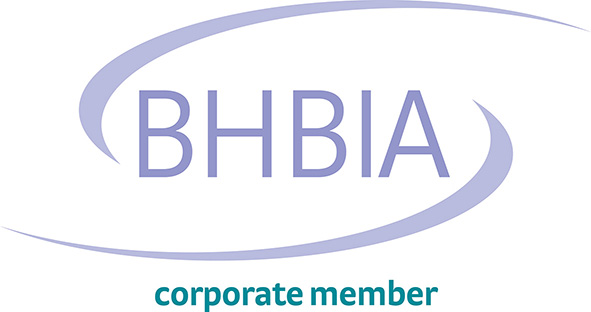Market Research Glossary
Market Research Glossary
There are currently 90 names in this directory beginning with the letter B.
B2B Exchanges
B2B exchanges are online marketplaces for businesses to buy and sell good and services from other businesses.
Back Checking
A quality control process by which the eligibility of market research participants is checked after they have taken part in a study, usually by re-contacting a proportion of them.
Back to Back Focus Groups
This research method ushers a focus group immediately into another session upon the conclusion of the first session.
Back Translation
It is a validation process where a survey is first translated into another language and then translated back into the original language by a different person. The objective is to ensure that the original translation is accurate.
Balanced Incomplete Block (BIB)
In a balanced incomplete block design, the treatments are assigned to the blocks so that every pair of treatments occurs together in a block the same number of times. This achieves the balance that is described in the title of the procedure.
Balanced Scale
A balanced scale refers to an ordinal question asked to the respondents of a piece of research. It is mainly used in quantitative market research questionnaires and surveys.
Banner Format
It is a style of data tabulation where the responses from each sub-group are listed for each question in the survey.
Banner Point
banner points are demographic breakdowns or other classification questions like overall satisfaction levels.
Bar Chart
It is a type of graph where the data is displayed in the form of bars that can be arranged vertically or horizontally.
Base Line
It is the result of a study conducted to obtain a snapshot or reading of current conditions prior to some change in market conditions or the introduction of some test conditions. The result is then used as a standard for comparison with subsequent studies.
Baseline Market Segmentation Study
The first segmentation study conducted by an organization which will act as the initial state of the segment and will be compared to future studies.
Basic Research
Basic research, also called pure research or fundamental research, is a type of scientific research with the aim of improving scientific theories for better understanding and prediction of natural or other phenomena.
Bayesian Statistics
Bayesian statistics is a system for describing epistemological uncertainty using the mathematical language of probability.
Before and After with a Control Group
The idea is that any confounding factors would impact equally on both groups and therefore any differences in the data drawn from the two groups can be attributed to the experimental variable.
Behavioral Advertising
Behavioral advertising (aka online behavioral advertising or “OBA”) allows advertisers and publishers to display highly relevant ads and personalized marketing messages to users based on their web-browsing behavior.
Behavioral Component of Attitudes
Behavioral (or conative) component: the way the attitude we have influences on how we act or behave.
Behavioral Targeting
Behavioral targeting is a marketing method that uses web user information to strengthen advertising campaigns.
Bench Mark
A study conducted to obtain a snapshot or reading of current conditions prior to some change in market conditions or the introduction of some test conditions.
Benefit Segmentation
It is the dividing of potential consumers into sub-groups according the benefits sought.
Bernoulli Response Variables
Responses that require the choice of one out of two possibilities. Examples would be yes/no or on/off questions.
Best Light Phenomenon
It is when respondents bias their answers in a market research project so that they can then appear in the best possible way to those who are looking at the responses
Bias
It is a general term referring to the inaccuracy in a research study caused by non-sampling errors
Biased Questions
It is a question that is phrased or expressed in such a way that it influences the respondent’s opinion. Such questions may provide information that leads a respondent to consider the subject in a specific way. Bias may also be introduced through verbal or facial expressions, body language or by paraphrasing the original question.
Biased Responses
Response bias (also called survey bias) is the tendency of a person to answer questions on a survey untruthfully or misleadingly.
Biased Sample
It is a sample that does not contain units in the same proportion as the population of interest.
Bid
To offer to pay a particular price for something, especially at a public sale where things are sold to the person who offers most money (an auction).
Bimodal
Bimodal is the practice of managing two separate but coherent styles of work: one focused on predictability; the other on exploration.
Binomial Experiment
The experiment consists of n repeated trials. Each trial can result in just two possible outcomes.
Binomial Test
It is a statistical test of dichotomous data (where there are two possible outcomes) to check whether the research data is significantly different to what would be expected.
Bipolar Adjectives
They are two opposing adjectives that define the opposite ends of a scale (such as a semantic differential scale).
Birth Rate
The birth rate is the ratio between the number of live-born births in the year and the average total population of that year.
Bivariate Correlation
Simple bivariate correlation is a statistical technique that is used to determine the existence of relationships between two different variables (i.e., X and Y).
Bivariate Data Set
bivariate data is data on each of two variables, where each value of one of the variables is paired with a value of the other variable.
Bivariate Regression
It is a procedure for deriving the equation that relates a single metric dependent variable and a single metric independent variable
Bivariate Regression Analysis
To determine the strength of the relationship of two variables, an independent and dependent variable.
Bivariate Techniques
Bivariate Research Techniques consist of a variety of statistical testing methods used in market research to analyse the relationship between two variables.
Blind Study
In the case of the blind study approach, participants are unaware if they are part of the experimental process or the control group.
Blind Test
Blind testing is a way to consumer test products or packages whereby consumers are unaware of the underlying brand which they are evaluating.
Blind Testing
It is the testing of products with potential consumers where brand names, packaging and other identifying items have been removed.
Block Numbering Area (BNA)
Small divisions of non-metropolitan counties for which statistics are held for grouping and numbering.
Blocking Factor
It is the relevant external variable that is used to group (or block) experimental units into groups so that the experimental group and the control group are matched.
Blocks
A block trade is the sale or purchase of a large number of securities. A block trade involves a significantly large number of equities or bonds being traded at an arranged price between two parties.
Booster
refers to additional interviews involving a particular sub-group of a sample to ensure there are sufficient members of the sub-group in the resulting sample.
Boundary
a decision must be made whether the products of all relevant technologies or only those of a particular technology are to be included.
Box Plot
It is a basic graphing tool that displays centering, spread, and distribution of a continuous data set.
Brainstorming Sessions
are a creative method of coming up with new ideas or solutions to a problem by generating a large number of ideas without subjecting them or the person who suggested them to critical evaluation. They can also be referred to as "ideation sessions"
Branching Question
A question used to guide an interviewer through a survey to different questions (i.e. skipping some questions), depending on the answers given.
Brand
It is a product or service to which human beings attach a bundle of tangible (functional product and service characteristics) and intangible (emotional and/or symbolic) meanings that add value. A brand has one strategic purpose and that it to differentiate itself from competitors.
Brand Associations
Brand association is when company traits are rooted in customers' minds. The goal of brand association is to have a brand linked with positive attributes. Brand association builds value and equity for a company brand.
Brand Equity
It is a term developed to describe the financial value of a brand to the bottom line profit of a business.
Brand Essence
It is the set of core values that define a brand. These values remain constant over time even though the executional characteristics of packaging, advertising (and other marketing variables) may change. By defining the brand essence with clarity, a brand owner creates a template against which all marketing and NPD activity can be developed and integrated.
Brand Extension
A brand extension is when a company uses one of its established brand names on a new product or new product category. It's sometimes known as brand stretching.
Brand Image
It is the total impression created in the mind of a potential consumer by a brand and all its functional and emotional associations. The total image can be seen as the sum of several images such as the product, user, occasion, service and personality images.
Brand Impact
Brand Impact Market Research is a method used to establish the effectiveness of advertising and brand messaging for a particular brand, product or service. Brand Impact Market Research can also take the form of a tracking survey, whereby the impact of the client's brand is tracked over time against a benchmark.
Brand Name
Brand name is one of the brand elements which helps the customers to identify and differentiate one product from another.
Brand Personality
It is an expression of the fundamental core values and characteristics of a brand, described and experienced as human personality traits, eg friendly, intelligent, innovative etc. It is an expression of the relationship between the consumer and the brand.
Brand Positioning
It is the location of a brand in relation to its competitors in some pre-defined space. The space may be defined by criteria used by consumers, such as "value for money" or "age of consumer" etc.
Brand Proposition
It is a sentence or phrase that encapsulates the brand benefits, eg a brand with technical superiority or a brand that guarantees next-day delivery. Often a brand benefit is translated into an end-line that becomes part of the brand communication on advertising, packaging or promotions, eg "the world's favourite airline".
Brand Share
It is the percentage of sales of a specific product category that are accounted for by one brand. Brand shares can be expressed in terms of the sales value or the volume of units sold.
Brand Switching
Brand switching is a term in which your customers change brands. It's an easy concept to understand, but preventing it from happening to your customers is an entirely different matter.
Branding
The process, which may take decades, by which a brand comes to have added values and involves long-term support by communications either above or below the line. The associative strength between an advertisement (usually) and a brand expressed as a positive or negative relationship, ie "well branded" or "poorly branded"
Bricks and Mortar
The term "brick-and-mortar" refers to a traditional street-side business that offers products and services to its customers face-to-face in an office or store that the business owns or rents.
Brief
can have two similar meanings in the context of Marketing Research. A Brief can be a statement (usually in writing) of a business problem that could be alleviated by conducting some marketing research. Briefs are normally written by a client company for a research supplier and they usually have a background and an objectives section. A suggested methodology section can also be included.
Briefing
A Briefing can be a training session prior to starting work on a study in which all specifications and details of the study are reviewed. This is generally followed by practice (or pilot) interviews where they are being used. Bubble Test sees thematic apperception test.
Bubble Test
Participants are invited to fill speech and thought into “bubbles” on a cartoon showing an imaginary situation relevant to the research.
Bulletin Board Groups
A bulletin board is a methodology used for qualitative market research. A bulletin board is a virtual tool or discussion thread allowing users to sign-in and post comments, answer questions, read postings, post content, upload and download files.
Business Intelligence
Business intelligence is defined as a process of collecting and processing business information to derive insights and make profitable business decisions.
Business to Business (B2B)
Definitions. B2B (or “Business To Business”) refers to all the business processes that take place between one company and another. It follows that B2B sales are therefore made between a selling company (the supplier) and a buying company (the customer company).
Business to Consumer (B2C)
The term business-to-consumer (B2C) refers to the process of selling products and services directly between a business and consumers who are the end-users of its products or services.
Business-to-Business Interviews
Interviews with business people or experts within a particular field. Executive interviews are often used where the majority of knowledge of a subject is held by a minority of people.



